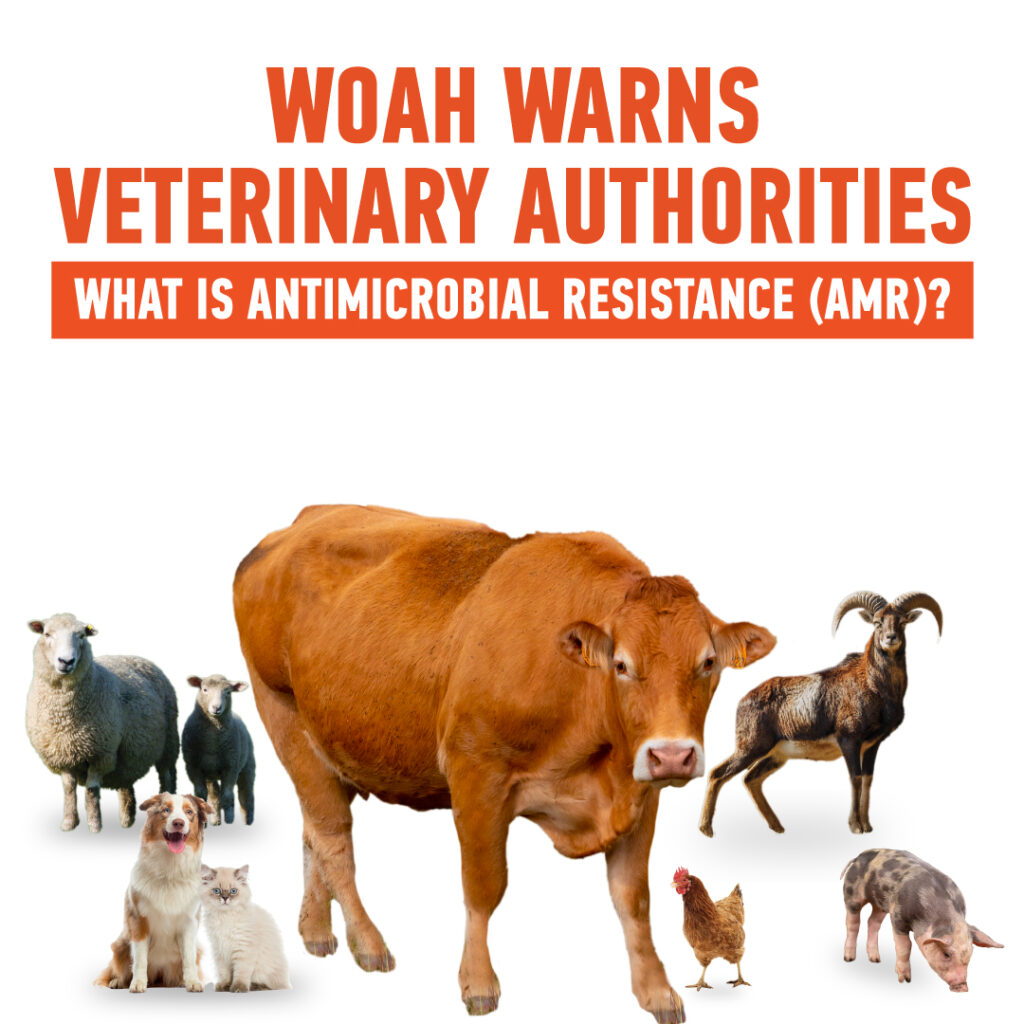Antimicrobial resistance (AMR) is a pressing global health concern that affects humans, animals, plants, and the environment. The World Organisation for Animal Health (WOAH) has recently released a landmark report highlighting the importance of addressing the misuse of antimicrobials in the animal industry. In this blog, we delve into the key aspects of AMR, the current state of antimicrobial use, and the urgent need for action to combat this growing threat.
Understanding Antimicrobial Resistance
AMR occurs when bacteria, viruses, fungi, and parasites evolve to resist the effects of antimicrobial agents, rendering these drugs ineffective. The misuse and overuse of antimicrobials in various sectors, including the animal industry, contribute to the emergence of drug-resistant strains, commonly known as “superbugs.”
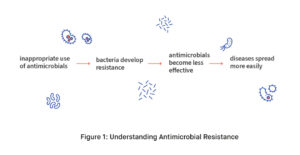
The Global Impact of Antimicrobial Resistance
The consequences of AMR extend beyond the health of humans and animals, affecting plant health and the environment. Resistant strains of bacteria can lead to increased suffering and losses in terrestrial and aquatic animals, jeopardizing livelihoods and food security for millions of people.
- Animal Suffering and Losses: In animals, the spread of new resistant strains of bacteria leads to increased suffering and losses, affecting millions of livestock globally.
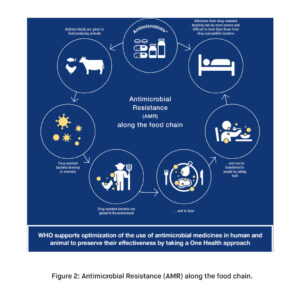
2. Livelihoods and Food Security: With approximately 1.3 billion people relying on livestock for their living and over 20 million people depending on aquaculture, the economic implications of AMR threaten livelihoods and food security.
Antimicrobial Resistance’s Impact on Human Health:
- Resistant Infections: Resistant strains of bacteria originating in animals can pose a direct threat to human health. Infections become more challenging to treat, leading to increased morbidity and mortality.
- Hospital Acquired Infections: Hospitals worldwide face challenges in treating infections as new resistant strains affect patients, complicating routine surgeries and treatments.
- Food-Borne Infections: The origin of some human deaths due to AMR remains unclear, but food-borne infections from animals are a potential source, emphasizing the interconnectedness of animal and human health.
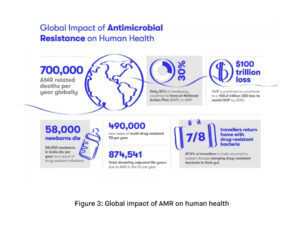
Current State of Antimicrobial Use in Animals
Despite international commitments to phase out the use of antimicrobials for growth promotion in healthy animals, a recent WOAH report reveals concerning trends. Approximately 20% of WOAH Members still report using antimicrobials for growth promotion, with 11% using critically important antimicrobials for human health, such as colistin. Additionally, 50% of Members lack a regulatory framework for the use of antimicrobials in animals.
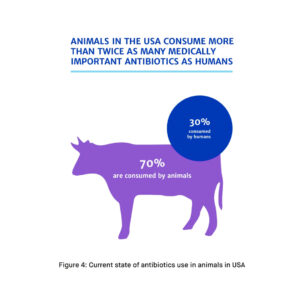
The Most Important Antimicrobial Agents in Animals for Treatment
Here’s a breakdown of veterinary important antimicrobial agents for food-producing animals, along with their specific usage in treating certain diseases and the types of animals involved:
- Aminocoumarin:
- Example: Novobiocin
- Specific Usage:
- Disease Treatment: Bacterial infections
- Target Animals: Various food-producing animals such as cattle, poultry, and swine.
- Application: Novobiocin is used to treat bacterial infections in food-producing animals, particularly those caused by susceptible Gram-positive bacteria.
- Aminocyclitol:
- Example: Spectinomycin
- Specific Usage:
- Disease Treatment: Respiratory and reproductive tract infections
- Target Animals: Primarily used in poultry but can also be used in swine and other food-producing animals.
- Application: Spectinomycin is effective against certain Gram-negative bacteria and is used to treat respiratory and reproductive tract infections in food-producing animals.
- Aminoglycosides:
- Examples: Dihydrostreptomycin, Streptomycin
- Specific Usage:
- Disease Treatment: Bacterial infections, including respiratory infections
- Target Animals: Cattle, swine, and other food-producing animals.
- Application: Dihydrostreptomycin and Streptomycin are used to treat bacterial infections, particularly those caused by susceptible Gram-negative bacteria. They are often used for respiratory infections in food-producing animals.
- Aminoglycosides +2 Deoxystreptaine:
- Examples: Amikacin, Apramycin, Fortimycin, Framycetin, Gentamicin, Kanamycin, Neomycin, Paromomycin, Tobramycin
- Specific Usage:
- Disease Treatment: Broad-spectrum bacterial infections
- Target Animals: Cattle, poultry, swine, and other food-producing animals.
- Application: This group of aminoglycosides is used to treat a wide range of bacterial infections in food-producing animals, including those caused by Gram-negative bacteria.
- Amphenicols:
- Examples: Florfenicol, Thiamphenicol
- Specific Usage:
- Disease Treatment: Respiratory and enteric infections
- Target Animals: Cattle, poultry, swine, and other food-producing animals.
- Application: Amphenicols inhibit bacterial protein synthesis and are used to treat respiratory and enteric infections in food-producing animals.
These antimicrobial agents are integral in veterinary medicine for maintaining the health of food-producing animals. However, their use should be guided by responsible practices to mitigate the risk of antimicrobial resistance and ensure the safety of animal products for consumers. Veterinary professionals play a crucial role in overseeing their appropriate use in the industry.
Challenges and Non-compliance
Mislabeling of feed additives and the unknowing administration of low doses of antimicrobials to animals further highlight the challenges in achieving compliance with international standards. Competent authorities and the livestock industry must fulfill their responsibilities to phase out the use of antimicrobials for growth promotion and enact relevant legislation.
The Role of WOAH and Urgent Call to Action
WOAH emphasizes the need to restrict antimicrobial use solely to veterinary medical purposes. The organization calls on its Members to engage in dialogue with stakeholders for a total ban on the use of antimicrobials as growth promoters, starting with those critically important for human health.
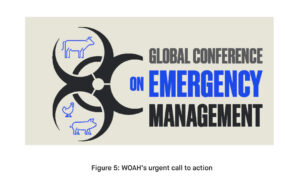
AMR’s Impact on Human, Animal, and Environmental Health
AMR poses a significant threat to human and animal well-being, with the potential to reverse decades of medical progress. The spread of resistant strains in animals can lead to infections that are challenging to treat in humans. Responsible use of antibiotics, proper disposal of unused drugs, and waste management are crucial to mitigating the environmental impact of AMR.
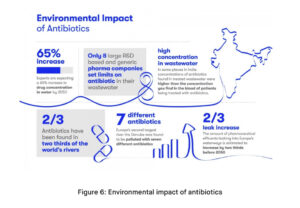
The Quadripartite Initiative and Global Action
The recent Plenary Assembly of the AMR Multi-Stakeholder Partnership Platform, led by the Quadripartite (FAO, UNEP, WHO, and WOAH), underscores the collaborative efforts needed to address AMR on a global scale. The Platform aims to collectively preserve antimicrobials as life-saving medicines through a One Health approach.
Despite challenges, there is encouraging progress in the fight against AMR. WOAH’s recent report indicates a 13% decline in global antimicrobial use in animals over three years. The organization has launched ANIMUSE, a digital platform facilitating global data access, reporting, and discussion to further combat AMR.
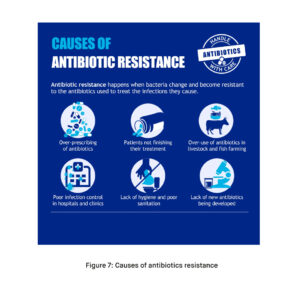
All in all, antimicrobial resistance is a critical issue that demands immediate and collective action from veterinary authorities, the animal industry, and the broader global community. Understanding the causes, consequences, and potential solutions to AMR is crucial for safeguarding the health and well-being of humans, animals, and the environment. WOAH’s ongoing efforts and the global initiatives discussed in this blog serve as a call to action for everyone to play a role in curbing the rise of antimicrobial resistance.
REFERENCES
[1] World Health Organization. (n.d.-a). Global action plan on antimicrobial resistance. World Health Organization. https://www.who.int/publications/i/item/9789241509763
[2] Ncube, O. (2023, November 29). Woah urges veterinary authorities and the animal industry to live up to their commitments regarding the use of antimicrobials as growth promoters. WOAH. https://www.woah.org/en/woah-urges-veterinary-authorities-and-the-animal-industry-to-live-up-to-their-commitments-regarding-the-use-of-antimicrobials-as-growth-promoters/
[3] Antimicrobial resistance – woah – world organisation for animal health. WOAH. (2023, November 14). https://www.woah.org/en/what-we-do/global-initiatives/antimicrobial-resistance/
[4] Ncube, O. (2023a, September 8). New report reveals global decrease in antimicrobial use in animals – woah – world organisation for animal health. WOAH. https://www.woah.org/en/new-report-reveals-global-decrease-in-antimicrobial-use-in-animals/
